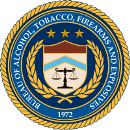Senior Editor
The Bureau of Alcohol, Tobacco, Firearms and Explosives (ATF) originally wanted to institute a multiple long gun sales reporting requirement in 12 states from whence guns recovered in Mexico had been purchased, according to a memorandum revealed as part of Appendix III to the joint staff report to Congress about Operation Fast & Furious (See related story elsewhere in this issue).
The March 26, 2010 memo was sent by then-acting BATF director Kenneth Melson to the attorney general, but whether Eric Holder actually read the document is not known. Several months later—ironically just days before the murder of Border Patrol Agent Brian Terry in December 2010—Melson sent a similar but expanded memo to Holder that narrowed down the focus to four southwest states: Arizona, California, New Mexico and Texas.
But the original March memo also named Florida, Colorado, Oklahoma, Illinois, Nevada, North Carolina, Georgia and Washington as top source states for recovered guns.
Under the reporting requirement, initiated by what the ATF calls a “demand letter,” retailers are required to notify the ATF “whenever the licensee sells or otherwise disposes of two or more rifles within any five consecutive business days with the following characteristics: Semiautomatic; a caliber greater than .22 rim fire, and the ability to accept a detachable magazine.
Although Melson sent the memo to the “attorney general,” there is no indication whether Holder actually read it. If he did, the question arises about his testimony before Congress in 2011 that he had only learned of Operation Fast & Furious “a few weeks” prior to his Capitol Hill appearance.
The first Melson memo is dated almost a year before Holder testified about Fast & Furious, and the document contains detailed information about what was underway in Phoenix.
“On or about November 1, 2009,” the memo says, “individuals in the Phoenix, Arizona area began to illegally purchase firearms, firearm magazines and/or ammunition to be transported to Mexico. Case agents identified 25 individuals that purchased in excess of 1130 firearms in the Phoenix area with over-the-counter transactions. Twenty-two of these individuals purchased firearms that were recovered in Mexico in the possession of drug traffickers affiliated with the Sinaloa Cartel. Over 50 firearms purchased by two of these individuals were recovered in stash locations or during a crossing along the border in Arizona and Texas and were destined for delivery to DTO’s (Drug Trafficking Organizations) in Mexico.” Based on that note, it appears clear that Melson and others at ATF realized guns were being trafficked across the border.
There are other examples of suspected gun trafficking detailed in the memo.
Why Melson and the ATF backed away from sending demand letters to gun dealers in the eight states outside of the Southwest is not explained.




